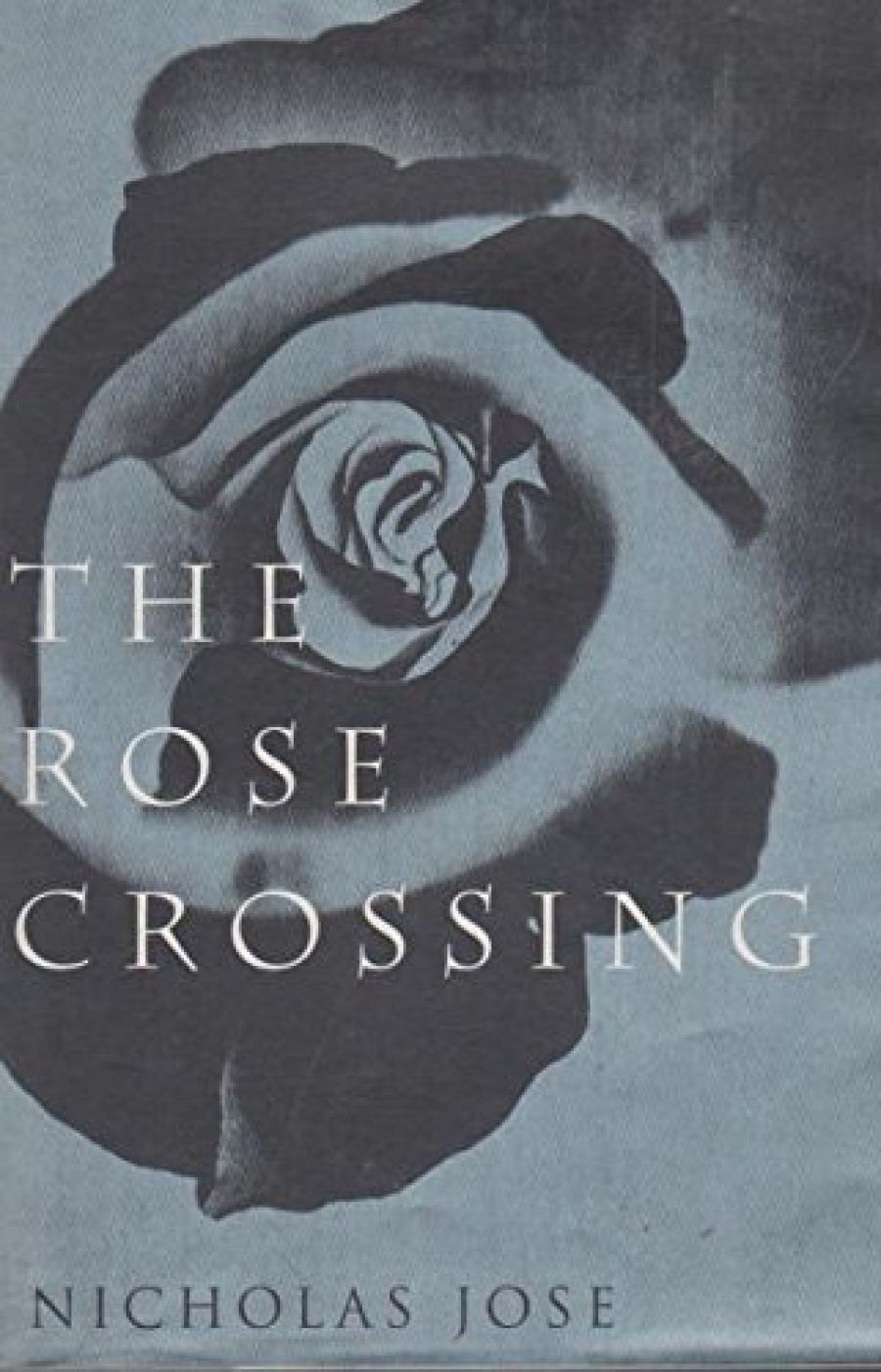
- Free Article: No
- Review Article: Yes
- Online Only: No
- Custom Highlight Text:
Occasionally after you have read a book that pleased, baffled, irritated, or bored you, someone points out all the subtleties, virtues, and faults you have missed. This could perhaps happen to readers of The Rose Crossing.
We know from Anna Russell that in opera it doesn’t matter what the characters do so long as they sing it; the same could be said of novels, providing the author can convince us. On the surface The Rose Crossing is a tall story set in the seventeenth century, in which, as in a fairy tale, people you don’t believe in behave in an unreal way and get into preposterous situations. They make stagy ‘period’ speeches, they don’t engage our sympathies, they sometimes creak when they move.
- Book 1 Title: The Rose Crossing
- Book 1 Biblio: Hamish Hamilton, $l9.95 pb
However, below the surface, there is a current, a sort of muffled parable about power, possession, the irony and futility of ambition and achievement. It doesn’t matter that characters and events are unconvincing; nothing is quite what it seems. Symbols abound. Mundane preoccupations – monarchy/republic, East/West, purity/lust, the cross-breeding of roses – could be the visible forms of something quite different. Roses in particular may have a hidden significance, hinting perhaps at the alchemist’s Red Rose and White Rose, the mythical Black Rose of the East whose possessor will have undisputed mastery over land and sea, the elements, time, creation and destruction.
Edward Popple is a horticulturalist, and ‘natural philosopher’ with a knowledge of alchemy. At the execution of Charles I he sees the axe fall, hears the crowd cry: ‘Monarchy is dead! Long live the Republic!’ From a ‘bearded salesman’ in the crowd he buys ‘a jade-stone of Tartary’, carved with a ‘multifloriate black rose’. He decides to give it to his daughter Rosamund – Rose of the World – the light of his life, his ‘spirit bride’.
By 1651, after a taste of Cromwell’s Commonwealth and Protectorate, many of those who cried ‘Long Live the Republic!’ are ready to welcome back the exiled Charles II. Edward, not involved in royalist plots, takes a job as ship’s doctor on a voyage of discovery. He is urged to go by his faithless wife and by the realisation that he is lusting after Rosamund, his substantial spirit bride; in fact, he ‘slavered as he thought of … her curves of milky-golden flesh … thighs of curd and proud strawberry teats’. Despite these incestuous cravings when he finds she has stowed away in his cabin he keeps her hidden there, eventually passing her off as a boy to the lecherous and strangely unobservant crew.
Meanwhile, across the seas in far Cathay, the last Ming Emperor has died, and the imperial throne has been taken by the invading Manchu. In the port of Zayton, Lou Lu, former chief court eunuch, is plotting with Ming royalists to restore the fallen dynasty in the person of Taizao, last Prince of Yong. Taizao has no heir; though Lou Lu procures a constant supply of young and beautiful girls for his bed, he remains impotent. His sexual requirements are kinky.
Lou Lu and the prince set sail for Rome. They intend seeking the Pope’s support for the Ming cause in return for concessions to Catholic missionaries. They encounter trouble, and land on a fertile uninhabited island where Edward and Rosamund have already been marooned. Edward is occupied with cataloguing the native flora, making a garden, and cultivating plants and rose cuttings he has brought from England. He is also struggling to sublimate his lust for Rosamund’s ‘swelling curves’ for, unknown to her, she is to be his mystical partner in a great alchemical undertaking. Through a Conjunction of Opposites – her pure virgin essence, his transmuted male energy – he aspires to create the Black Rose that gives supreme power over the universe.
On the island, East and West come together. Lou Lu and Edward, who converse in Latin, make a deal. In return for Edward’s help in navigating the Chinese ship to Rome, Lou Lu will cooperate in an experiment. Among the botanical specimens he has brought from China is a yellow flower, the Flower of Young Love, which he provides for crossing with an English rose.
Young love and crossbreeding also take place between the English rose Rosamund and the yellow flower Taizao (cured of his impotence by watching her urinate). To her father’s fury she becomes pregnant and a male child is born; whereupon the Chinese, taking Rosamund and the infant heir to the Ming dynasty, sail off to a grim fate in China. Edward is left behind. He has lost his pure virgin; his experimental garden has been destroyed but by a miraculous last-minute accident a black rose has been created. Alone, half-mad, stranded on a deserted island, he has become master of the universe.
This bare outline of an ambitious and complicated plot may seem unfair to the author’s intention, industry and background knowledge, but it is a difficult book to describe in a limited space. The writing is very uneven; sometimes clumsy or careless (“‘Forgive me”, she said, draping herself round his neck …’), sometime novelettish (‘her teeth were a string of tiny pearls’), sometimes heavily mannered, artificial, running to purple prose. The central theme is intriguing and there are interesting incidents and descriptions but also an impression of stage-managing more acceptable in a fable than a living novel.


Comments powered by CComment